The Off-Ball Playmakers
Clever movement doesn't just create good shots - it sets up easy passes, too.
Massive thanks to Kees van Hemmen [@HemmenKees], Kieran Doyle [@KierDoyle], Blair Newman [@thesecondball], Yash Thakur [@Odriozolite], and Isa [@orozismo] for their advice and commentary, and to Yash, Kieran, and American Soccer Analysis [@AnalysisEvolved] for the vizzes.
When most people think of great creators in the game, they generally think of elite passers. Visionaries who can do stuff like this:
Or this:
Glance at any table compiling league leaders in assists and expected assists (xA) and you’re bound to encounter names like Lionel Messi, Fran Kirby, Kevin de Bruyne, and Dmitri Payet — footballers who regularly thread the eye of the needle to carve out some of the most valuable chances in the game.
But there is another cohort whose creation numbers pop without being considered particularly creative or gifted from a passing perspective. While a few might simply be underrated in these areas, many of them primarily set up teammates for easy goals from similarly elementary passes.
They are the Off-Ball Playmakers.
Moving Beyond Scoring as the Dominant Framework for Off-Ball Movement
Off-ball movement tends to be overwhelmingly associated with finding the net thanks to the rise of expected goals and an increasing understanding that shot location — and not finishing — drives sustainable scoring (by and large). Whether it be making runs in behind to create 1v1’s, shedding markers to get a free header, or simply attacking favorable zones in the box, individuals who can produce attempts from high-probability areas are prized above all.
These “ceiling raisers” will often be paired with ball-dominant “floor raisers” to foster a desirable balance across the team; the technical geniuses drop to receive and fire passes into dangerous areas for the off-ball types to finish.
The movers are the scorers; the passers are the creators.
But looking at off-ball movement only via its relationship to scoring is incredibly reductive. After all, runs sans possession are happening all the time, influencing every action and passage of play leading up to a goal, including the final pass.
And that’s important to note, because some of the most desirable assists in the game are some of the easiest to execute.
Cutbacks are the most efficient open-play path to goal aside from through balls, according to American Soccer Analysis’ research on where goals come from.
Although their classification is murkier, square passes and low, driven crosses (under minimal pressure) can be assumed to be similarly valuable and undemanding to pull off relative to other deliveries. Short progressive passes can be included in this as well.
In other words, for certain assists, the real playmaking value isn’t coming from the pass, but from the moments that preceded it.
The real playmaking value is coming from the off-ball movement.
Getting Easy Money in Transition
Featuring: Kylian Mbappé, Sofia Jakobsson, & Achraf Hakimi
The counter-attack is probably the easiest situation to generate uncomplicated, first-rate passing opportunities from off-ball movement.
NEW VIDEO LINK
In many ways, Mbappé is the prototypical example of the playmaking that will be described in this article. His xA stats have been top class year after year (0.31 p90 at PSG), including a bonkers 0.51 xA p90 figure in the shortened 19/20 Ligue 1 season. While he is a brilliant creator off-the-dribble and possesses underrated vision and passing chops, a significant portion of his assist value comes from his off-ball movement, especially in transition.
Explosive, touchline wingers, such as Bayern Munich’s and Sweden’s (and ex-Real Madrid’s) Jakobsson, mimic Mbappé’s omnipresent threat on the break, staying high and wide as outlets so that they can storm the space behind the fullbacks. In the majority of situations, these players’ athletic qualities and positioning makes it a straightforward task for midfielders to find them.
Achraf is another that is devastating vs. reorganizing blocks and has averaged a blistering (for a fullback) 0.23 xA p90 this league campaign and last. Arriving from deep, he has time to assess the direction in which his colleagues pull defenders before organically knifing into the gaps that manifest.
Hakimi will show up many more times throughout this piece and the sheer unpredictability of his runs mixed with his lightning-quick recognition and acceleration is awesome to watch.1
Exploiting the Channels
Featuring: Erling Haaland, Marie-Antoinette Katoto, Mbappé, Sam Kerr, & Achraf
NEW VIDEO LINK
If Mbappé isn’t the poster boy of this write-up, then Haaland is. Virtually no one would pin him as a creative monster and, yet, he has quietly experienced steady upticks in chance creation over the last three seasons, helping him get to 5 assists from only 10 90’s in the 2021/22 edition of the Bundesliga.
A portion of that is finishing overperformance from his teammates, but some of it is also down to how he has become better and better at translating his efficacy in behind to playmaking. A monster in the left halfspace, the Norwegian is primed to burst into the channel at the slightest hint of service and his growth as a ball carrier and scanner further enables him to exploit the easy openings generated from his maneuvers.
Of course, this is only possible because Haaland is skilled at staying onside, something displayed by PSG’s Katoto in the video. She might be the greatest menace off-the-shoulder in women’s football and her textbook, curved runs empower her regular ventures into the prime real estate between fullback and center-back.
Chelsea fans would argue for Sam Kerr and they have a decent case. As Fran Kirby noted in a recent interview with Radha Gupta from She Talks Ball, it’s a nightmare trying to keep track of her on the last line:
Kerr’s frequent, unorthodox deployment as a left forward in both back-four and back-three formations enhances her ability to sneak into un-trackable lanes, and her synergy with Kirby goes a long way to nailing down the timing of the whole thing.
Hence, while the Australian is famed for her scoring exploits, she also stands as one of the premier creators2 in the Women’s Super League, ranking second for xA p903 at 0.44 (excluding those with low sample sizes).
Let’s cap this section off by returning to our two ever-presents.
Achraf is probably the best off-ball mover of any fullback in the men’s game and Mbappé is simply phenomenal at managing his relation to the offside trap, reacting instinctively to stay in step with the last defender, whether that involves hopping backwards or delaying his movement.
But there is someone else who is even craftier at this than Kylian.
The Next Level: Donny van de Beek
NEW VIDEO LINK
Donny van de Beek really does deserve a video all to himself. The forgotten man at Manchester United used to be (and probably remains) one of the most intelligent, dynamic pests off-the-shoulder in the world. You have the standard stutter steps, the persistence and discipline to wait for the pass, and the clever positioning in the first, second, and third clips, respectively, but we move into savant-level territory for the final ones.
Blink and you’ll miss his trademark move: simply standing still. As vdB enthusiast Kees Van Hemmen put it (slightly rephrased):
The thing where the defensive line steps up and he goes in line with a center-back to receive the ball into space — as the line moves away from him — is something I’ve hardly seen anyone else do.
It’s so subtle and he’s never running, so he’s almost always onside because of the little variations in line depth that are normal even in an organized defense.
Essentially, van de Beek waits for defenders to step away from him as his side circulates backwards or laterally, generating separation through sheer tactical recognition. It’s why it often appeared like he burst into the box from nowhere to assist at strong volume for Ajax (despite being far from the stereotypical silky playmaker).
Cutting Against the Grain (of Fullbacks)
Featuring: Lauren Hemp, Chloe Kelly, Raheem Sterling, Megan Rapinoe, & Mbappé
NEW VIDEO LINK
Lauren Hemp and Chloe Kelly were the most potent wing duo in the WSL last season, thriving in the “pase de la muerte”4 zones on either side of the box.
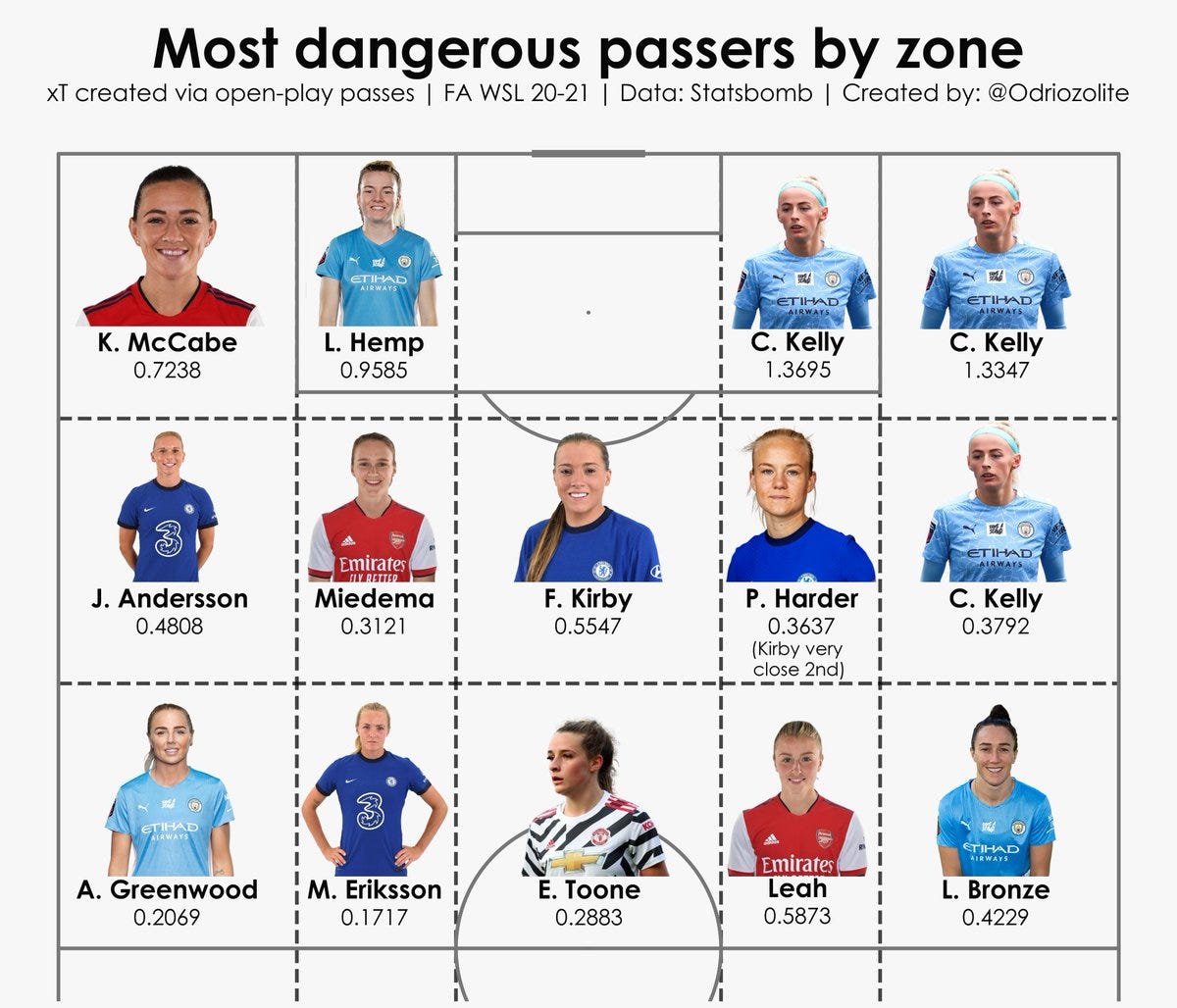
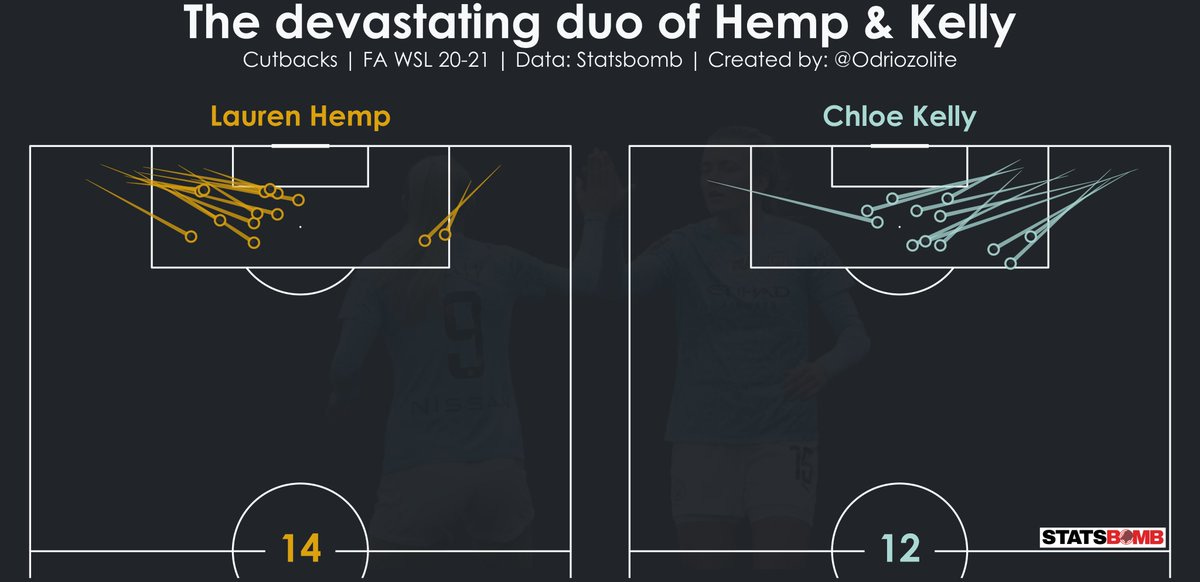
It must be noted that a sizable portion of these chances arrived off-the-dribble, as Hemp and Kelly are premier take-on artists. However, their solo heroics were supplemented by sharp sprints in behind fullbacks, with Hemp looking particularly prolific at this on film.
In addition to the methods used to stay onside (which Sterling demonstrates), a recurring theme involved the wide attacker timing their runs against the grain of the fullback. On certain occasions, it was almost as if an FB stepping up or out was a trigger for the winger to explode off the mark. By buying crucial yards with this technique, room opened up on the diagonal, bringing the receiver closer to goal. This, in turn, boosted the chances that the resulting key pass turned into an assist.
As expected, Mbappé is proficient at this, although his generational quickness lessens the need for perfect measurements. While still remarkably swift at the age of 36, Megan Rapinoe possesses less of that luxury, having to lean on these wily movements to continue accessing lethal passing zones long after her peak.
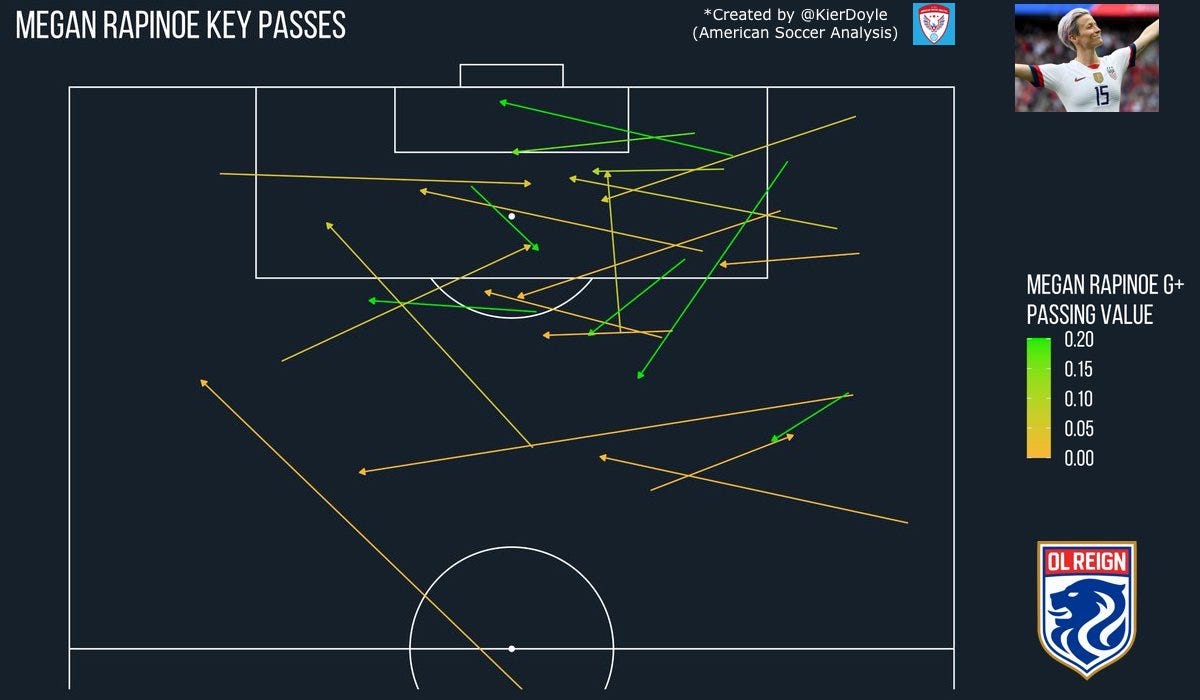
The underlying numbers speak for themselves:
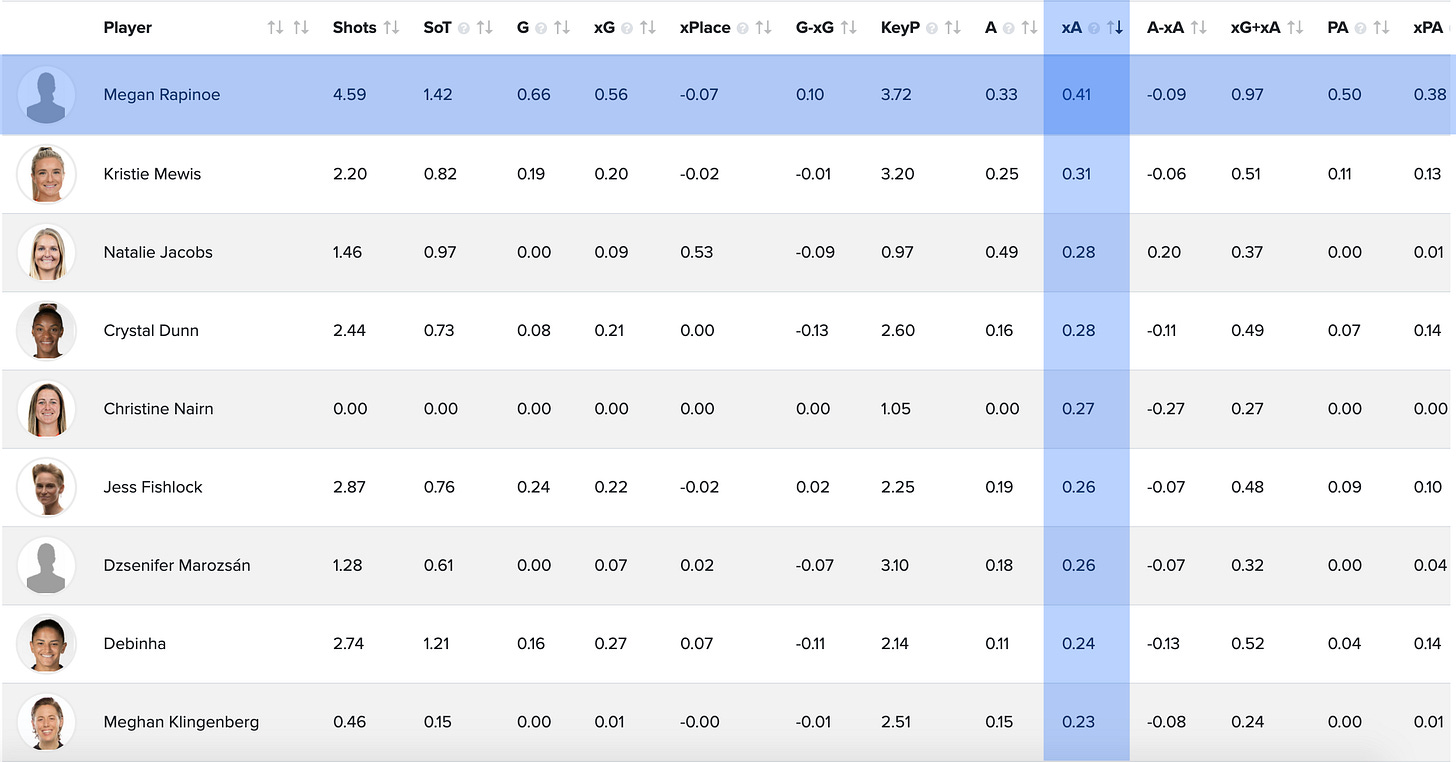
Generating Separation Off of One-Two’s
Featuring: Jordi Alba, Kenti Robles, Achraf, & Sterling
NEW VIDEO LINK
Fullbacks don’t just take it — they dish it out as well, intensifying the might of their overlaps by engaging in one-two’s.
There is so much that can be said about Jordi Alba as an off-ball terrorizer,5 but no one shined brighter than the diminutive Spaniard in his prime when it came to creating separation off of combinations. His feel for when to initiate these are fantastic and the fact that he starts moving as he kicks the ball is crucial, given that it offers Alba the advantage from a standing start.
Achraf and Real Madrid’s Kenti Robles are two on the opposite side of the pitch that periodically burn defenses from these patterns, with the former bamboozling opponents via his desire to investigate the underlap. The latter, specifically, deserves more recognition for her comfort in these high-tempo scenarios and, like Alba, takes off in the same motion as the pass.
Sterling is the only non-fullback selected because I came across assists that were just too damn sexy to leave out. For all of his sauce as a dribbler and carrier, it was his activity without possession that elevated him to world-class heights from 2017/18-2019/20. Guardiola’s utilization of his wingers meshed perfectly with Sterling’s deception and preternatural instincts lingering off-the-shoulder, paving the way for the rapid combinations and cutbacks that tortured the Premier League for years.
Making the Extra Pass in the Box
Featuring: Thomas Müller & Sam Kerr
I sincerely apologize for waiting till the end to bring up Thomas Müller, who is the king of all things off ball. But I thought it best to save him so that I could hone in on the most unique trait he possesses: playing extra passes in the box.
NEW VIDEO LINK
I’ll admit, I cheated a bit by including some assists where the technical execution was far from effortless, but the main principle remains.
Many players stop their search for optimal territory once they get a touch in front of goal. For Müller, the quest for the best penalty-area locales never ends. He simultaneously identifies the best areas to attack while scanning for the positions of his teammates, granting him the capacity to instantly exploit brief advantages before they dissipate — like transient wormholes that teleport the ball to seemingly inaccessible locations.
In the rare event that he is unable to map out what is before him, his supercomputer-processing speeds rise to the forefront to dictate actions on the fly.
As a result of being able to fabricate guaranteed goals like few can, Müller places second highest in xA p90 in Europe’s top five men’s leagues.
Sam Kerr doesn’t have quite the same level of genius as an extra passer in open play, but it might be a different story on set-pieces.
NEW VIDEO LINK
For all the importance placed on speed, different physical traits can also be leveraged for off-ball playmaking, such as height, or in Kerr’s case, leaping prowess.
The sheer variety through which footballers can create high-value chances without needing to lean on insane passing ability is welcome news for scouting departments who wish to expand the creative profiles on their team, but the pool of those who can reliably depend on any one method is rare.
The scarceness of cutbacks (and those “normal” passes that resemble cutbacks) illustrates how difficult it can be to manufacture looks that are both elementary in execution and valuable. Only through balls are managed at a lower rate, suggesting that off-ball playmaking may be close to as differential and rarified as the traditional, ball-dominant style of creation that we all know and love.
Messi vs. Müller as a playmaker? It might be a closer debate than you think.

Additional, Tangentially-Related Reading:
Where Goals Come From — American Soccer Analysis [@AnalysisEvolved]
The value of disruptive runs. Or, why Firmino is such a valuable player for Liverpool — David Sumpter [@Soccermatics]
On Tracking Data, the Nature of Soccer, and Allocation — Tiotal Football [@TiotalFootball]
It seems that playing on both flanks as a fullback and a winger in his Dortmund days has had beneficial effects on his movement profile.
Rapid combinations between the lines are another facet of Kerr’s creation package, which fell outside the scope of this article.
Behind, you guessed it, Kirby, who is currently racking up 0.77 xA p90 btw lmao.
“Cutback” is often translated to “pass of death” in Spanish, which might be my favorite thing in the whole wide world.
It’s worth emphasizing that Alba is also flat-out excellent at crossing the ball and doesn’t rely solely on off-ball movement to fashion chances.

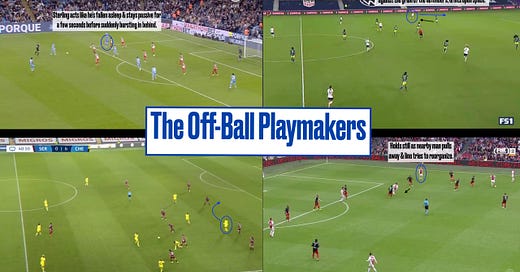


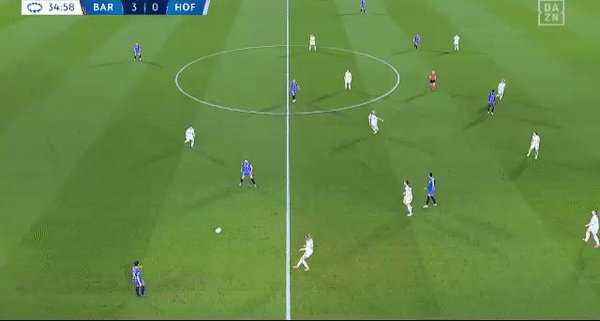


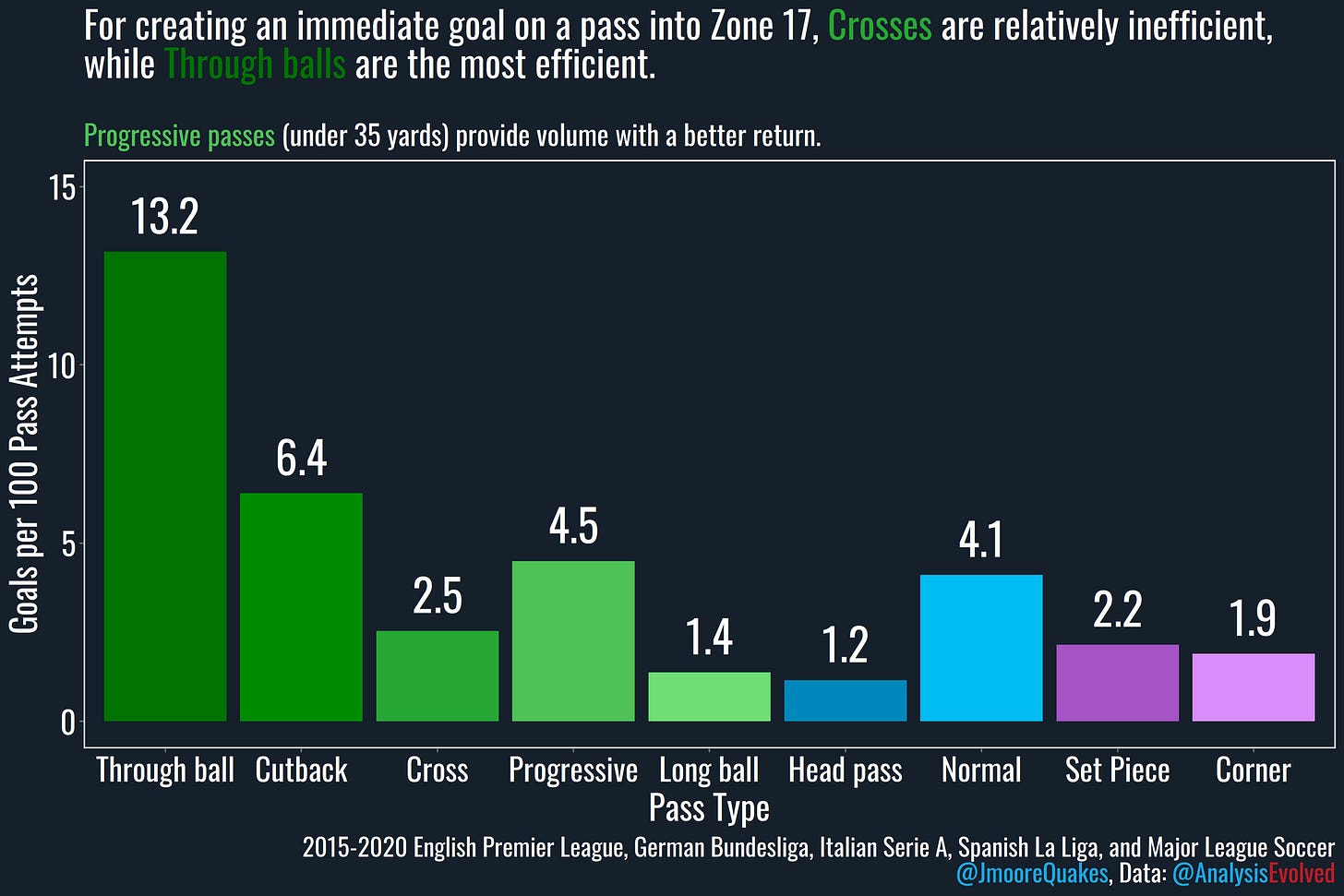


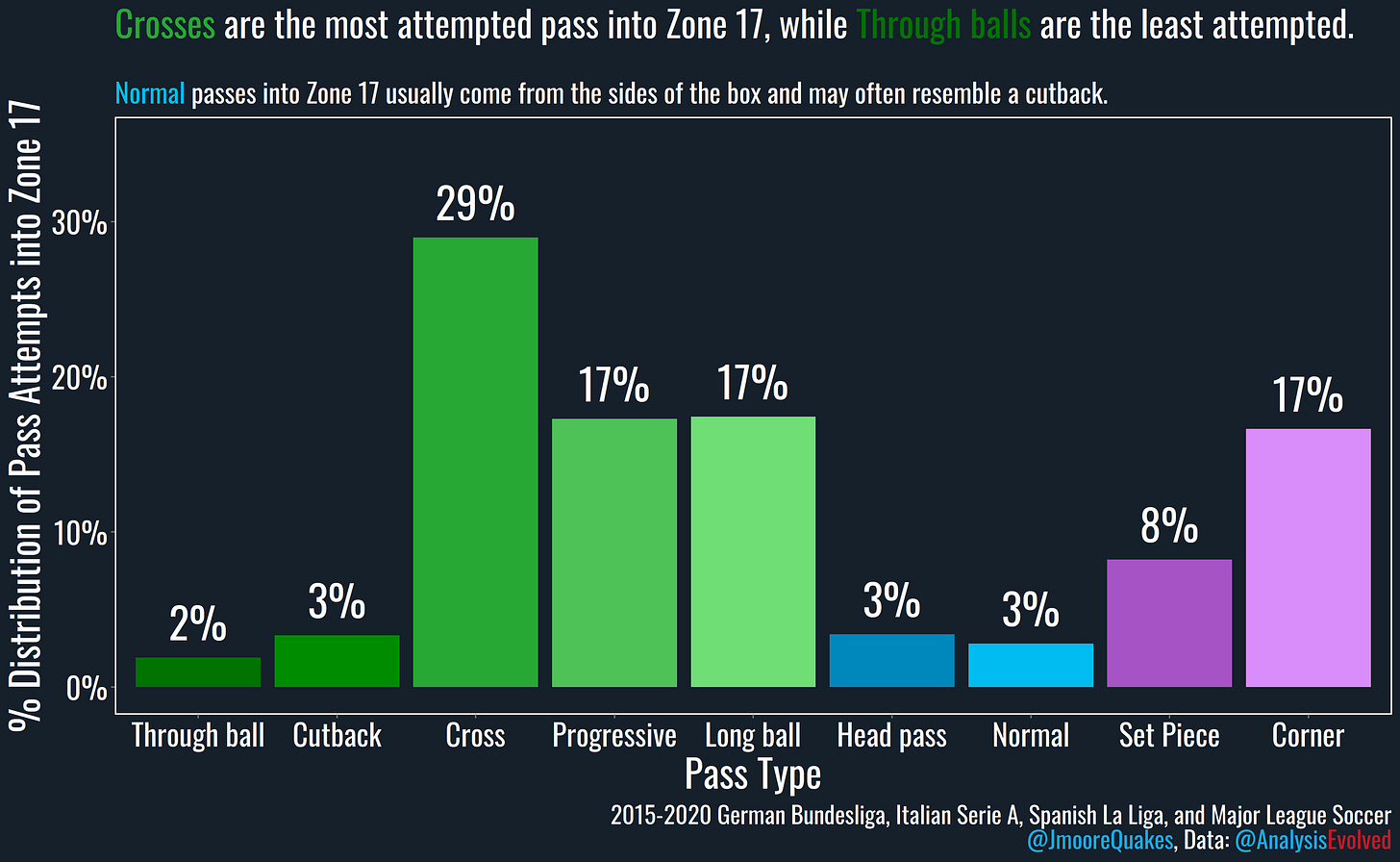
Reading this for the 3rd time and I'll read it again
Shut up and take my money